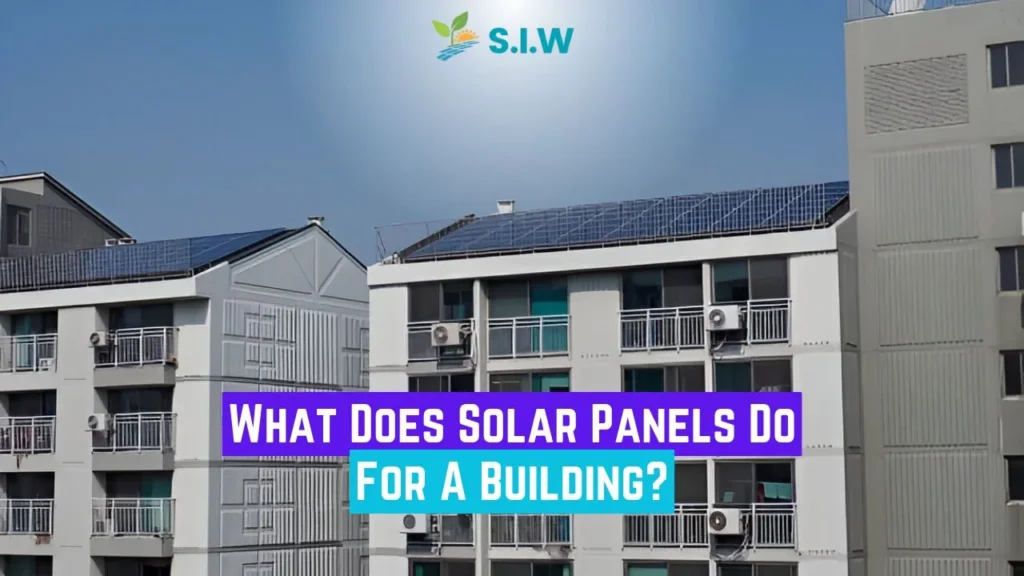Solar panels are increasingly becoming an essential component for modern buildings, offering a myriad of benefits that enhance energy efficiency, sustainability, and overall property value. In this article, we will explore the various functions and advantages of solar panels, emphasizing how they contribute significantly to both residential and commercial structures.
Understanding Solar Panels and Their Mechanism
At their core, solar panels are devices that convert sunlight into electricity through a process known as the photovoltaic effect. Each panel consists of numerous solar cells, typically made from silicon, which absorb sunlight and generate an electric current. This electricity can be utilized in various ways within a building, significantly reducing reliance on conventional energy sources.
Types of Solar Panels
There are primarily three types of solar panels used in buildings:
- Monocrystalline Solar Panels: Made from a single crystal structure, these panels are highly efficient and have a longer lifespan. They perform well in low-light conditions and require less space compared to other types.
- Polycrystalline Solar Panels: Composed of multiple silicon crystals, these panels are less expensive but slightly less efficient. They are suitable for larger spaces where efficiency is not the primary concern.
- Thin-Film Solar Panels: These lightweight panels are made by depositing a thin layer of photovoltaic material on a substrate. They are flexible and versatile but typically have lower efficiency rates.
Each type of panel has unique advantages and can be selected based on specific building needs and budget constraints.
Energy Generation and Cost Savings
One of the primary functions of solar panels is to generate electricity. By harnessing sunlight, they can provide a substantial portion, if not all, of a building’s energy requirements. This leads to significant cost savings over time.
Reduced Electricity Bills
When solar panels are installed, buildings can often generate enough electricity to cover their needs, which drastically reduces monthly electricity bills. In many cases, buildings can achieve net-zero energy status, meaning they produce as much energy as they consume.
Incentives and Tax Credits
Various government incentives and tax credits can further enhance the cost-effectiveness of solar panel installation. Programs such as the Federal Investment Tax Credit (ITC) allow property owners to deduct a significant percentage of the installation costs from their federal taxes. This makes solar energy not only environmentally friendly but also financially appealing.
Environmental Impact and Sustainability
Adopting solar panels in buildings contributes positively to the environment. By using solar energy, buildings reduce their carbon footprint and reliance on fossil fuels.
Reduction in Greenhouse Gas Emissions
Solar panels produce clean, renewable energy that does not emit harmful greenhouse gases. By transitioning to solar power, buildings can significantly contribute to the fight against climate change.
Sustainable Building Practices
Incorporating solar panels into building designs promotes sustainability. Many architects and builders now emphasize solar integration in their plans, ensuring that new constructions align with environmental goals. This not only enhances the building’s marketability but also aligns with consumer demand for green living spaces.
Increase in Property Value
Buildings equipped with solar panels tend to have higher property values. As energy efficiency becomes a significant selling point in real estate, homes and commercial spaces with solar installations are more attractive to buyers.
Market Demand for Energy-Efficient Properties
According to various studies, homes with solar energy systems can sell for up to $15,000 more than comparable homes without solar. Buyers are increasingly looking for properties that offer long-term savings and environmental benefits.
Long-Term Investment
Investing in solar panels is not just about immediate savings; it is a long-term investment. The lifespan of solar panels typically ranges from 25 to 30 years, providing decades of electricity savings. This long-term view makes solar energy a wise financial choice for property owners.
Versatility in Building Applications
Solar panels can be integrated into various types of buildings, including residential homes, commercial properties, and industrial facilities. Their adaptability makes them suitable for a wide range of applications.
Rooftop Solar Installations
Rooftop solar panels are the most common application. They utilize otherwise unused space and can be installed on almost any building type. This method maximizes solar energy capture while minimizing land use.
Solar Carports and Awnings
Beyond rooftops, solar panels can be installed on carports and awnings, providing shelter while generating energy. This innovative application maximizes space efficiency and enhances the aesthetic appeal of properties.
Building-Integrated Photovoltaics (BIPV)
BIPV systems integrate solar technology directly into building materials, such as windows, walls, and roofs. This approach not only generates energy but also maintains the structural integrity and design of the building.
Technological Advancements
The solar industry is rapidly evolving, leading to advancements that enhance the efficiency and effectiveness of solar panels.
Improved Efficiency Rates
Recent technological advancements have led to increased efficiency rates in solar panels. Many modern panels now achieve efficiency levels exceeding 20%, meaning more energy is generated from the same amount of sunlight.
Energy Storage Solutions
In addition to energy generation, solar energy systems can be paired with battery storage solutions. This allows buildings to store excess energy for use during non-sunny periods, further enhancing energy independence and reliability.
Conclusion
In conclusion, solar panels offer a myriad of benefits for buildings, ranging from energy generation and cost savings to environmental sustainability and increased property value. As technology continues to advance, the advantages of incorporating solar energy into building designs will only grow. By embracing solar power, property owners can not only reduce their energy costs but also contribute positively to the environment and enhance the marketability of their properties.
For those looking to optimize their building’s energy use, investing in solar panels is a forward-thinking solution that addresses both current needs and future demands.








